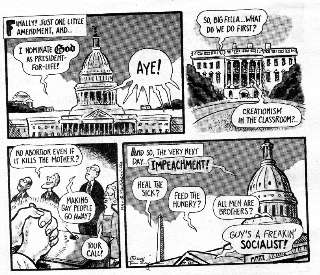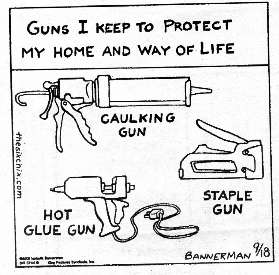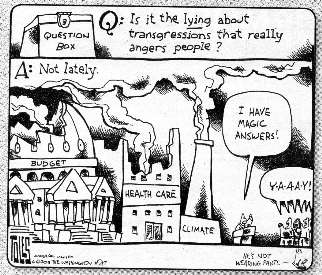Flagstaff - Dairy Springs CG - Happy Jack - Dairy Springs - Flagstaff
With the VM, Venerable Monster, Specialized Expedition Touring Bike - happy birthday! - VM is 30 years old this Summer
|
| |||||
|
| |||||
Day 1: Elk in The Wind. To Dairy Springs CG. 25 miles; camp at 7200'.
The girl herd rolls over the fence like a tan wave. Synchronized leaping.
Glorious. The harem of cow elk wait in the forest for a gap when there are no vehicles - except for me,
puffing up the steps to the crest above the Mormon Lake bowl. The wind is shrieking - predicted to top 30
MPH today - so I don't hear any of the elk utterances. It's a fine day, except for the wind.
I waited at home, finishing packing and cleaning up a bit while the day
warms. Then, off on a mini-tour to the Mormon Lake area. I'm bringing all my food, camp gear, etc. because
the closest food is at Mormon Lake Lodge.
I consider taking the long way around to camp - then reject this idea
because the wind blasts unchecked across the section by the "lake" overlook. It's enough with a bit of
Ponderosa protection. Mormon Lake, when full, is reportedly the largest natural lake in Arizona, and
the diminutive size and depth and the ephemeral nature of this "lake" tells us a good deal about this arid state.
Now, the sun is setting and the wind is howling still - yet mostly in
the tree tops and not buffeting the TarpTent. Could be a cold night.
|
| |||||
Day 2: The Second Law. To Happy Jack and back to camp. 35.5 miles.
The second law slaps me in the face with full force, nearly stopping my
progress and prompting me to grab a lower gear. It's a good thing I have so many lower gears. Mostly, I
ride in lower gears today, as I tour through the P-pine forest and open parks to Happy Jack. The second law
of bicycling - the wind is always in your face. The first law is a unidirectional law, what goes down must
go up (the law does not address what goes up must go down, because this does not follow the law). I pause
behind the closed FS (Forest Service) station at Happy Jack for lunch and smile, thinking I've found a loop
hole in the second law - the wind continues from the South. Done eating, I quickly find there is no loop hole,
the law holds, the wind now gusts from the NW. A few snow flakes sweep past. What? It takes me riding to
where the pavement narrows (7 miles from the South Mormon Lake junction) to warm up. Then, I occasionally
get a reprieve from the second law and soon I am drifting past the geese, goslings, herons near the fire
station of Mormon Lake.
I rest a bit, then add more clothes and watch the birds the campground
hosts have lured with their feeders - Black-headed Grosbeaks, Western Tanagers, Chickadees, Stellar Jays,
Cowbirds, hummingbirds, Ravens, Western Bluebirds, lots of birds. The campground has emptied and the
wind seems to be lessening.
Two hiking trails originate at Dairy Springs, and there is also a
trailhead at nearby Double Springs Campground. These trails lead to scenic overlooks of nearby Mormon
Lake and the surrounding prairies, forests and volcanoes. From the Dairy Springs area, the Mormon
Mountain Trail (#58) leads about 3 miles to the top of 8500' Mormon Mountain. It shares a short distance
with the Dairy Springs Trail (#136). From Double Springs - The Lake View Trail (#132) is a two-mile trail
to an overlook.
Day 3: Law Loophole. Return to Flag. 25 miles. 85 total miles.
Yahoo, the wind is at my back. A violation of the 2nd law of bicycling,
yet I'll take it. The Osprey hovers above Lower Lake Mary, apparently looking for a snack. It's still
cool and windy as I roll back toward Flagstaff, arriving in time for the lunch buffet at the Himalayan
Grill - wondrous post-touring food. All told, I've ridden a mild 85 miles during this mini-tour.
| |||
.
Click here or on the happy cyclists to go to all WV reports about Bicycle Touring
| |||
.
.
| ||||
| ||||
| ||||
 |
 |
 |
 |
 |
 |
 |
 |
 |
Link to below Onion article (click here).
Scientists: 'Look, One-Third Of The Human Race Has To Die For Civilization To Be Sustainable, So How Do We Want
To Do This?'
26 Jan. 2012 | ISSUE 48•04
Scientists say at least 2 billion dead bodies will be burned and converted into fossil
fuels.
WASHINGTON—Saying there's no way around it at this point, a coalition of scientists
announced Thursday that one-third of the world population must die to prevent wide-scale depletion of the planet's
resources—and that humankind needs to figure out immediately how it wants to go about killing off more than 2 billion
members of its species.
Representing multiple fields of study, including ecology, agriculture, biology,
and economics, the researchers told reporters that facts are facts: Humanity has far exceeded its sustainable
population size, so either one in three humans can choose how they want to die themselves, or there can be some
sort of government-mandated liquidation program—but either way, people have to start dying.
And soon, the scientists confirmed.
"I'm just going to level with you—the earth's carrying capacity will no longer
be able to keep up with population growth, and civilization will end unless large swaths of human beings are killed,
so the question is: How do we want to do this?" Cambridge University ecologist Dr. Edwin Peters said. "Do we want to
give everyone a number and implement a death lottery system? Incinerate the nation's children? Kill off an entire
race of people? Give everyone a shotgun and let them sort it out themselves?"
"Completely up to you," he added, explaining he and his colleagues were "open to
whatever." "Unfortunately, we are well past the point of controlling overpopulation through education, birth control,
and the empowerment of women. In fact, we should probably kill 300 million women right off the bat."
Because the world's population may double by the end of the century, an outcome
that would lead to a considerable decrease in the availability of food, land, and water, researchers said that,
bottom line, it would be helpful if a lot of people chose to die willingly, the advantage being that these volunteers
could decide for themselves whether they wished to die slowly, quickly, painfully, or peacefully.
Additionally, the scientists noted that in order to stop the destruction of global
environmental systems in heavily populated regions, there's no avoiding the reality that half the world's progeny will
have to be sterilized.
"The longer we wait, the higher the number of people who will have to die, so we
might as well just get it over with," said Dr. Chelsea Klepper, head of agricultural studies at Purdue University,
and the leading proponent of a worldwide death day in which 2.3 billion people would kill themselves en masse at the
exact same time. "At this point, it's merely a question of coordination. If we can get the populations of New York
City, Los Angeles, Beijing, India, Europe, and Latin America to voluntarily off themselves at 6 p.m. EST on June 1,
we can kill the people that need to be killed and the planet can finally start renewing its resources."
Thus far, humanity has been presented with a great variety of death options,
among them, poisoning the world's water supply with cadmium, picking one person per household to be killed in the
privacy of his or her home, mass beheadings, and gathering 2.3 billion people all in one place and obliterating
them with a single hydrogen bomb.
Sources confirmed that if a death solution is not in place by Mar. 31, the U.N.,
in the interest of preserving the human race, will mobilize its peacekeeping forces and gun down as many people as
necessary.
"I don't care how it happens, but a ton of Africans have to go, because by 2025,
there's no way that continent will be able to feed itself," said Dr. Henry Craig of the Population Research Institute.
"And by my estimation, three babies have to die for every septuagenarian, because their longer life expectancy means
babies have the potential to release far more greenhouse gases going forward."
While the majority of the world's populace reportedly understands this is the only
option left to save civilization, not all members of the human race are eager to die.
"I personally would rather live, but taking the long view, I can see how ensuring
the survival of humanity is best," said Norwich, CT resident and father of three Jason Atkins. "I guess if we were to
do it over again, it would make sense to do a better job conserving the earth's finite resources."
"Hopefully, the people who remain on the planet will use the mass slaughter of their
friends and loved ones as an incentive to be more responsible going forward," he added.
|
Wild Vagabond Main |
Trip Report Index  |
Caveat  |
|---|